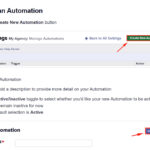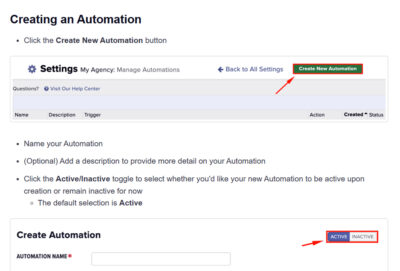In today’s rapidly changing business environment, change is inevitable. Organizations must adapt and evolve to stay competitive, and change management is a critical process in achieving this. Change management refers to the processes, tools, and techniques used to manage and facilitate organizational changes. HR plays a crucial role in change management, as it involves managing the people side of change.
In this blog post from Top Echelon Recruiting Software, we will explore the role of HR in change management, the benefits of effective change management, and provide tips for leading successful change initiatives.
What is Change Management?
Change management refers to the process of planning, implementing, and managing changes within an organization. Change can come in many forms, such as changes in organizational structure, processes, technologies, or even changes in the external environment.
Effective change management involves a systematic approach that considers the potential impact of change on the organization and its stakeholders and develops strategies to mitigate resistance and ensure successful adoption.
Phases of Change Management
The process typically involves several phases, each of which is critical to ensuring the success of the change initiative:
- Assessing the Need for Change: Identifying the reasons for change and understanding its necessity is the first step. This involves analyzing current processes, identifying inefficiencies, and recognizing opportunities for improvement.
- Developing a Plan for Implementation: This phase involves creating a detailed plan that outlines the steps needed to implement the change. The plan should include timelines, resources, responsibilities, and a clear outline of the desired outcomes.
- Communicating the Change to Stakeholders: Effective communication is key to any change management process. This phase involves informing all stakeholders about the upcoming changes, the reasons behind them, and the benefits they will bring.
- Implementing the Change: During this phase, the planned changes are put into action. This may involve restructuring teams, introducing new technologies, or changing business processes.
- Monitoring and Evaluating the Success of the Change: After implementation, it’s essential to monitor the progress of the change and evaluate its success. This involves collecting data, soliciting feedback, and making any necessary adjustments.
Importance of Change Management
Change can be disruptive and can have significant impacts on an organization’s performance, culture, and employees. Without effective change management, organizations risk encountering resistance to change, decreased employee morale and productivity, and potential failure to achieve desired outcomes. Overall, change management is a critical component of any organizational strategy and requires careful planning, communication, and execution to ensure successful adoption and integration of change within an organization.
The Role of HR in Change Management
Human Resources (HR) plays a crucial role in change management. HR professionals are responsible for developing and implementing strategies to manage change within an organization and for ensuring that the organization’s human capital is effectively aligned with the organization’s goals and objectives.
Key Roles of HR in Change Management
Change Planning
HR plays a critical role in the planning phase of change management. HR professionals are responsible for identifying the need for change, assessing the impact of the change on the organization and its stakeholders, and developing a plan for implementing the change. HR may also be involved in developing metrics to measure the success of the change.
Communication
Communication is a crucial aspect of change management, and HR plays a key role in ensuring that communication is clear, timely, and effective. HR may be responsible for developing a communication plan, identifying stakeholders and their communication needs, and ensuring that communication channels are open and accessible to all stakeholders.
Training and Development
HR is responsible for ensuring that employees are equipped with the skills and knowledge necessary to effectively implement the change. This may involve providing training and development opportunities, such as workshops, coaching, or e-learning modules. Ensuring employees understand new processes and systems is critical to the success of any change initiative.
Performance Management
HR may play a role in developing performance metrics and evaluating employee performance during the change process. This can help identify areas where additional training or support may be necessary and can help ensure that employees are aligned with the organization’s goals and objectives. By monitoring performance, HR can address any issues promptly and maintain productivity.
Employee Engagement
HR plays a critical role in maintaining employee engagement during the change process. This may involve developing strategies to mitigate resistance to change, recognizing and rewarding employees for their contributions, and providing support and resources to employees as they adapt to the change. Engaged employees are more likely to embrace change and contribute positively to the process.
Culture and Values
HR is responsible for ensuring that the organization’s culture and values are aligned with the change. This may involve developing a change management strategy that is consistent with the organization’s values and ensuring that employees understand and support the change. Maintaining cultural alignment helps preserve organizational integrity during transitions.
Recruitment and Retention
HR may play a role in recruiting and retaining employees during the change process. This may involve developing strategies to attract and retain top talent and ensuring that employees are motivated and committed to the organization’s goals and objectives. Effective recruitment and retention strategies help maintain a stable workforce during times of change.
Overall, HR plays a critical role in managing change within an organization. By effectively planning, communicating, training, and engaging employees, HR can help ensure that change is implemented successfully and that the organization is positioned for success in the future.
Benefits of Effective Change Management
Change management is the process of planning, implementing, and managing changes within an organization. Effective change management can have a variety of benefits for an organization, including:
Increased Employee Morale
Change management can help increase employee morale by involving employees in the change process, providing them with training and support, and recognizing their contributions. When employees feel that they are part of the change process and that their contributions are valued, they are more likely to be engaged and committed to the organization.
Improved Organizational Performance
Change management can help improve organizational performance by identifying areas for improvement, implementing new processes or technologies, and developing metrics to measure success. By continually evaluating and improving processes and systems, organizations can become more efficient, effective, and competitive.
Enhanced Customer Satisfaction
Change management can also lead to enhanced customer satisfaction by improving processes, products, and services. By listening to customer feedback and implementing changes to address customer needs and preferences, organizations can build stronger relationships with their customers and improve their reputation in the marketplace.
Increased Innovation
Change management can help promote innovation by encouraging employees to think creatively and come up with new ideas. By providing employees with opportunities to participate in the change process and encouraging them to share their ideas and feedback, organizations can foster a culture of innovation and continuous improvement.
Greater Agility
Change management can help organizations become more agile by enabling them to respond quickly to changes in the external environment. By continually evaluating and improving processes and systems, organizations can become more flexible and adaptable, and better equipped to respond to changes in the marketplace or regulatory environment.
Improved Risk Management
Change management can help organizations manage risk by identifying potential risks associated with change, developing strategies to mitigate those risks, and monitoring the success of those strategies. By taking a proactive approach to risk management, organizations can reduce the likelihood of negative outcomes associated with change.
Increased Collaboration
Change management can also help promote collaboration by breaking down silos and encouraging cross-functional teams to work together. By involving employees from different departments or teams in the change process, organizations can improve communication, build trust, and foster a more collaborative culture.
Better Alignment with Strategic Goals
Change management can help ensure that an organization’s activities and resources are aligned with its strategic goals and objectives. By continually evaluating and adjusting processes and systems to ensure that they support the organization’s overall strategy, organizations can become more focused and effective in achieving their goals.
In summary, change management can have a variety of benefits for an organization, including increased employee morale, improved organizational performance, enhanced customer satisfaction, increased innovation, greater agility, improved risk management, increased collaboration, and better alignment with strategic goals. By adopting a systematic approach to change management, organizations can position themselves for success in the future and remain competitive in a rapidly changing marketplace.
Tips for Leading Successful Change Initiatives
Leading successful change initiatives can be a complex and challenging process for employers. However, with careful planning, effective communication, and a commitment to engaging employees throughout the process, employers can increase the likelihood of success. Here are some tips for leading successful change initiatives as an employer:
Communicate the Need for Change
Before initiating any change, it’s essential to communicate why the change is necessary and how it will benefit the organization and its employees. By clearly communicating the reasons for the change and its potential benefits, employers can gain employee buy-in and increase engagement throughout the change process. Transparent communication helps build trust and reduces uncertainty.
Involve Employees in the Change Process
Engaging employees in the change process can increase their commitment to the change and improve its likelihood of success. Employers can involve employees by soliciting their feedback, providing training and development opportunities, and recognizing their contributions to the change process. Involving employees helps them feel valued and more willing to embrace change.
Provide Clear Guidelines and Expectations
It’s essential to provide employees with clear guidelines and expectations for the change process, including timelines, goals, and metrics for success. By providing employees with a clear understanding of what is expected of them, employers can increase engagement and reduce confusion or resistance to the change. Clear guidelines help ensure everyone is aligned and working towards the same objectives.
Develop a Comprehensive Plan
Successful change initiatives require a comprehensive plan that includes clear objectives, timelines, resources, and responsibilities. Employers should develop a plan that addresses potential obstacles and outlines strategies for mitigating risks. A well-thought-out plan provides a roadmap for the change process and helps keep everyone on track.
Assign a Change Leader
Assigning a change leader can help ensure that the change process stays on track and that employees have a point of contact for questions and concerns. The change leader should have strong communication skills, a thorough understanding of the change process, and the ability to motivate and engage employees. A dedicated leader helps maintain focus and momentum throughout the change initiative.
Provide Training and Development Opportunities
Change initiatives often require new skills or processes. Providing training and development opportunities can help employees adapt to the change and feel more confident and engaged throughout the process. Investing in employee development ensures that they have the knowledge and skills needed to succeed in the new environment.
Celebrate Success
Celebrating success is an essential part of any change process. Employers should take time to recognize and celebrate employee contributions and milestones along the way, which can increase engagement and motivation. Celebrating achievements reinforces positive behavior and helps maintain momentum.
Evaluate and Adjust
Continuous evaluation and adjustment are critical components of successful change initiatives. Employers should monitor progress, solicit feedback, and make adjustments as necessary to ensure that the change process stays on track and meets its objectives. Regular evaluation helps identify areas for improvement and ensures that the change initiative remains effective.
Leading successful change initiatives requires careful planning, effective communication, and a commitment to engaging employees throughout the process. By following these tips, employers can increase employee engagement, reduce resistance to change, and increase the likelihood of success.
Change Management and Your ATS
An Applicant Tracking System (ATS) can play a vital role in managing change within an organization. Change management involves effectively managing and guiding employees through transitions in processes, systems, and organizational structures. An ATS can facilitate this process by providing tools and resources to support employees through the change.
Centralized Communication and Collaboration
An ATS can provide a centralized platform for communication and collaboration, allowing all stakeholders to stay informed about the change process. It can also provide a mechanism for tracking progress and monitoring the success of the change initiative. By using an ATS, employers can provide regular updates, training, and support to employees, which can reduce confusion, anxiety, and resistance to the change.
Identifying and Addressing Barriers to Change
An ATS can help employers identify and address potential barriers to change. By tracking and analyzing data related to employee engagement, productivity, and retention, employers can gain insights into how employees are responding to the change and adjust their approach accordingly. This data-driven approach helps ensure that change initiatives are tailored to the needs of the workforce.
Consistent Messaging and Resources
Another benefit of using an ATS in change management is that it can help ensure that all employees are on the same page regarding the change. By providing a centralized platform for communication and collaboration, employers can ensure that all employees receive consistent messaging and have access to the same resources and information. Consistent communication helps build trust and reduces the spread of misinformation.
Facilitating Training and Development
An ATS can also facilitate training and development during the change process. Employers can use the system to deliver e-learning modules, schedule training sessions, and track employee progress. Providing ongoing training ensures that employees are equipped with the skills and knowledge needed to succeed in the new environment.
Enhancing Employee Engagement
By leveraging the capabilities of an ATS, employers can enhance employee engagement during the change process. The system can be used to solicit feedback, recognize employee contributions, and provide support resources. Engaged employees are more likely to embrace change and contribute positively to the organization’s success.
Overall, an ATS can play an important role in managing change within an organization. It can facilitate effective communication, collaboration, and support for employees during the change process, while also providing valuable insights into employee engagement and progress towards achieving change objectives.
Conclusion
Change management is a critical process in today’s rapidly evolving business environment. HR plays a crucial role in managing the people side of change, ensuring that employees are engaged, informed, and equipped to adapt to new processes and systems. By adopting a systematic approach to change management, organizations can achieve a variety of benefits, including increased employee morale, improved organizational performance, enhanced customer satisfaction, and greater agility.
Leading successful change initiatives requires careful planning, effective communication, and a commitment to engaging employees throughout the process. By following best practices and leveraging tools such as an ATS, employers can increase the likelihood of successful change implementation and position their organizations for long-term success.
Contact us today to learn more about how our ATS and change management solutions can help your organization navigate change and achieve its strategic goals!









